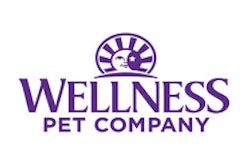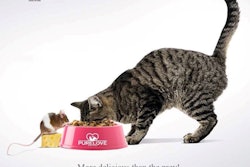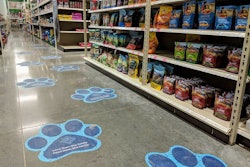
Veterinarians at the top of their game must be as well-versed as possible in the world of companion animal nutrition, particularly as pet owners trend more towards looking to nutrition as a source of preventive and even therapeutic care for their animals. But in this era of customized feeding and all the options that entails, knowing your kibble simply isn’t enough.
“As we recommend products we need to keep up with the pet parent, and hopefully veterinarians know how they're dealing with it,” said Dr. Danielle Bernal, BVSc, global vet nutrition director of Wellness Pet Company. “But what we're seeing as the biggest trend now is that next-gen pet parents, millennials and Gen Z, will be 58% of the pet parent population by 2025. They want to top, they want to boost, they want to supplement, they want to do all these things. So it's almost at a crucial point now where if we need to make sure that yes, the kibble’s great, [we also need to make sure veterinarians] have knowledge or awareness of all these additional supplementary products. Because if they're saying, ‘Well, this bowl boost is great but this supplement’s not,’ how do they navigate that world? And I think that's the extra layer that we see as the category continues to evolve behind this changing shopper. I don't even think veterinarians are ready for it because the brands they sell today aren’t in that space at all.”
The ‘Wild West’ of pet products
There is a lot of growth happening in the pet toppers/mix-ins and supplements spaces right now because many pet parents seem to be all in on the concepts. Whether it’s customization of their pet’s dinner they’re after or improving joint health of their aging animal via a supplement, owners are making it a point to expand their product purchasing beyond food.
“When we do research, you know how many pet parents are opening up their cupboards and showing us their supplements?” said Bernal. “So they want to do it, they're all about, ‘I want to have a long healthspan for my pet and a long lifespan, so I'm going to add anything that will help them get there.’ So how do they know what is the right way? Look at the hemp acceleration in that space — I just think the category itself can be the Wild West; how do we get those messages across to veterinarians? Because if they just say feed none of it, I can tell you now it's kind of like if you're on a weight loss diet and they say don't eat another thing that has fats or sugars in it, you can't hold true to that.”
There are also the unintended consequences of these added calories to pets’ bowls.
“The other thing is that as we keep talking toppers, toppers and toppers, those poor veterinarians are met with the knock-on effect of many of those where we're seeing our pets get larger and larger,” said Bernal. “I'm a big believer that we need to sit down and have that kumbaya around the fire and say, ‘Okay, here's the lay of the land.’ You know, we all want the right thing at the end of the day, which is better pet health. We've got companies who are multi-billionaires, and then you've got those who are just doing the right thing. So how do we represent them all honestly and accurately for those pet parents who are so confused?”
For the companion article, "Veterinarians and the pet food industry: Building bridges,” published in the March 2023 issue of Petfood Industry magazine, see www.PetfoodIndustry.com/articles/11989.

















